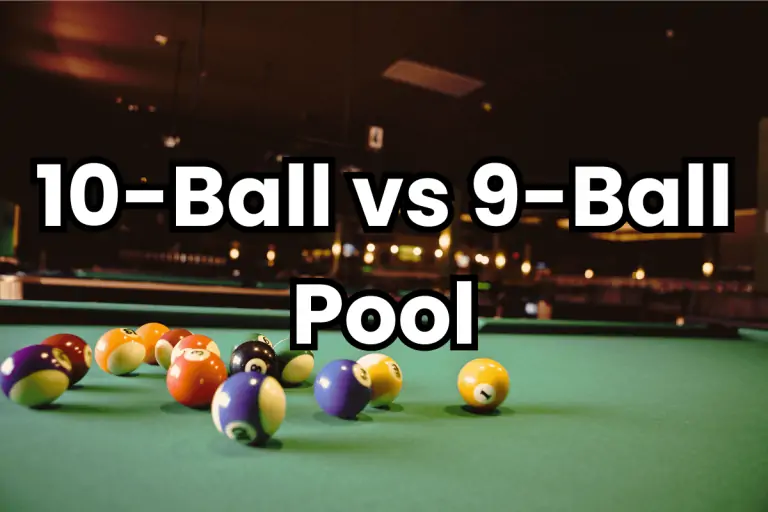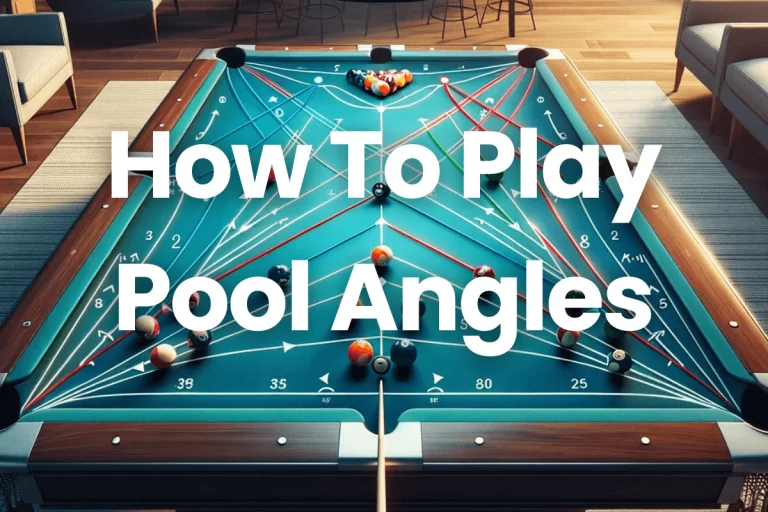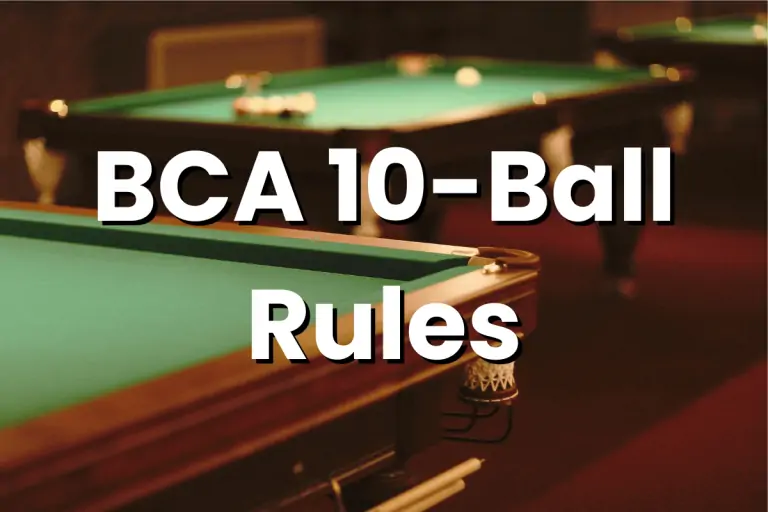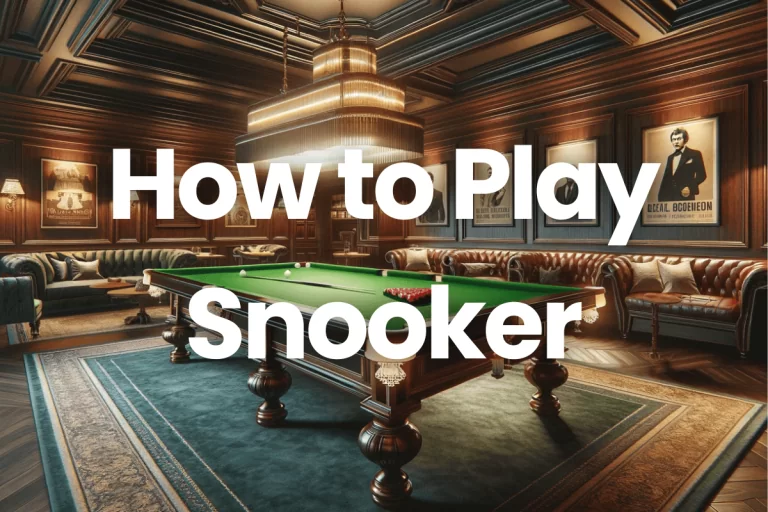Cue Tip Shaping Techniques & Tools | Unlock Accuracy & Power (2024)
The cue tip’s shape is the unsung hero of precision in billiards. It’s not just about aesthetics; it’s the key to accuracy and control. In this guide, we’ll explore the transformative impact of cue tip shaping. From the simplicity of sandpaper to specialized tools and advanced lathe techniques, we’ll uncover the methods that elevate your cue game to new heights.
What is a Cue Tip?
A cue tip is the replaceable end of a pool cue. It is the silent hero of every good shot. It’s a tiny, mighty marvel, usually crafted from leather, that bridges the gap between your stroke and the cue ball. This unsung champion transmits every ounce of your intention, guiding the sphere with precision and finesse. A well-shaped tip grips the ball like a handshake, ensuring control and predictable action. A neglected tip, however, is a fickle friend, leading to wobbly shots and missed opportunities. So, respect the tip, care for it with shaping and scuffing, and watch your game transform from shaky dance to confident domination of the felt.
How To Shape A Pool Cue Tip?
Here are some basic techniques to find the best way to shape your cue tip at home with sandpaper or tools.
Basic Technique For Cue Tip Shaping
Choosing the Right Grit Sandpaper (Coarse to Fine)
To remove old tip layers, begin with coarse grit sandpaper (around 120). Progress to medium grit (around 240) for refining, and finish with fine grit (400 and above) for a smooth surface.
Creating a Flat Surface
Hold the sandpaper flat on a stable surface. Gently rotate the cue tip in circular motions to ensure an even and flat shaping process.
Tapering the Tip for Draw Shots
To enhance draw shots, angle the cue slightly and focus sanding on the edges. This creates a tapered shape, crucial for controlled backspin.
Maintaining Consistent Pressure and Strokes
Apply consistent pressure during sanding, avoiding excessive force. Use even, controlled strokes to achieve uniform shaping without compromising the cue tip’s integrity.
Pro Tips For Cue Tip Shaping
Using Chalk to Visualize Shaping Progress
Apply chalk to the cue tip intermittently. The contrasting colors help visualize the sanding progress, ensuring precision throughout the shaping process.
Avoiding Over-Shaping and Maintaining the Correct Diameter
Regularly check the diameter to prevent over-shaping. Maintain the essential diameter for optimal cue ball control and shot accuracy.
Cue Tip Shaping With Tools
Explore files, templates, and multi-edge shapers as indispensable companions in perfecting your cue tip.
Types of Shapers
1. Files
Ideal for precision, files come in various shapes. Use them to sculpt rounded or nickel-radius tips, offering versatility in shaping according to your playing style.
2. Templates
Designed for consistency, templates ensure uniform shaping. They simplify the process, allowing for quick and accurate creation of specific tip shapes.
3. Multi-edge Shapers
Versatility defined, these tools offer multiple shaping edges. Perfect for those seeking flexibility in creating diverse tip profiles.
Effective Use for Different Shapes
1. Rounded Tips
Files excel in sculpting smooth, rounded tips. Gently shape the edges, maintaining a balanced, circular form.
2. Nickel Radius Tips
Templates are your go-to for precision in achieving the popular nickel radius. Align the template, and let it guide you to a consistent shape.
3. Multi-edge for Versatility
Experiment with various edges for customized shapes. It is ideal for players who prefer adaptability in their cue tip contours.
Advanced Techniques: Elevating Your Cue Tip Mastery
Lathe Shaping for Professional Finesse
For those seeking unparalleled precision, lathe shaping is the epitome of professional cue tip customization. This advanced technique, often used by professionals, involves using a lathe machine for intricate and tailored cue tip shaping.
Shaping for Different Playing Styles
1. Break Shots
Craft a sturdy, slightly flattened tip for powerful breaks. This enhances the cue’s impact on the cue ball, optimizing your break shot.
2. Draw Shots
Taper the cue tip edges for draw shots, promoting backspin control. A slightly rounded shape aids in cue ball manipulation during draws.
3. Spin Shots
For players favoring spin shots, maintain a rounded tip with a slight curvature. This facilitates enhanced cue ball spin and precision in shot execution.
Troubleshooting Tips for Common Mistakes
1. Uneven Surfaces
If your cue tip surface appears uneven, revisit your shaping technique. Ensure consistent pressure and strokes during the process to achieve a uniform surface.
2. Over-Shaping
Guard against over-shaping by periodically assessing the cue tip diameter. Regular checks prevent unintentional alterations and maintain optimal cue performance.
Maintaining Your Cue Tip: A Crucial Element of Billiards Excellence
Emphasizing Regular Scuffing for Optimal Grip
The key to consistent performance lies in maintaining your cue tip. Regular scuffing is not just a task; it’s your secret weapon for optimal grip, enhanced spin, and precise cue ball control.
Different Scuffing Methods
1. Sandpaper
A classic approach, sandpaper scuffing involves gently rubbing the cue tip surface to remove contaminants and restore its texture. This method provides a quick and effective grip enhancement.
2. Scuffing Tool
Dedicated scuffing tools are designed for efficiency. These tools, often equipped with abrasive surfaces, streamline the scuffing process, ensuring a uniform and thorough treatment.
3. Cue Ball Scuffing
An unconventional yet effective method involves scuffing the cue tip against the cue ball itself. This natural scuffing action occurs during regular gameplay and can contribute to maintaining optimal tip texture.
How Often to Scuff and Shape Based on Playing Frequency
1. Casual Players (1-2 Times a Month)
If you engage in casual play once or twice a month, consider scuffing and shaping your cue tip at a similar frequency. This ensures your cue is always ready for precise shots.
2. Regular Players (1-2 Times a Week)
For those enjoying more frequent play, scuffing and shaping should become a weekly routine. This consistent maintenance prevents tip wear and maximizes performance.
3. Intensive Players (Several Times a Week)
Intensive players, engaging in billiards several times a week, should scuff and shape their cue tip more frequently—potentially after each session. This proactive approach ensures peak cue performance during demanding gameplay.
Conclusion
The rewards of meticulous cue tip shaping extend far beyond aesthetics—elevating accuracy and control to unprecedented levels. Through consistent practice and experimentation, discover the perfect tip shape that complements your playing style. Share your experiences and insights in the comments, fostering a community of cue enthusiasts refining their craft. Unleash the true potential of your game by embracing the art of cue tip shaping—a journey where precision transforms every shot into a masterful stroke.
FAQs
Why is cue tip shaping important?
Cue tip shaping is crucial as it directly influences accuracy and control in billiards. A well-shaped tip ensures optimal interaction with the cue ball, enhancing your overall gameplay.
How often should I shape my cue tip?
The frequency depends on your playing habits. Casual players may shape it monthly, regular players weekly, and intensive players might need to shape it after each session for optimal performance.
Can I shape my cue tip with sandpaper at home?
Yes, sandpaper is a common and effective DIY method for shaping cue tips. Ensure you choose the right grit and follow proper techniques for optimal results.
What tools are recommended for cue tip shaping?
Tools like files, templates, and multi-edge shapers are popular choices. Each has its advantages, offering precision in crafting specific tip shapes to suit individual playing styles.
How do I troubleshoot common issues during cue tip shaping?
Common problems include uneven surfaces or over-shaping. To troubleshoot, maintain consistent pressure, check the diameter regularly, and choose tools compatible with your skill level and desired outcome.







